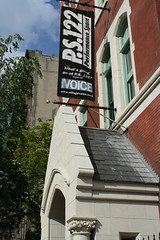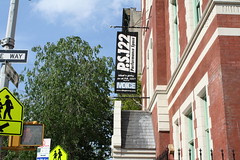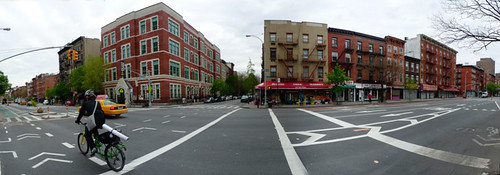In the late 1970’s, the East Village was “a neighborhood about to become something,” queer performance artist Tim Miller told The Local.
“Previous generations had established, in terms of cultural stuff, their foothold in SoHo, so it was already too expensive and certainly in my mind not nearly as radical in its politics or cultural stance” as the East Village where, he said, the feeling “was so different.” Attracted by this, Mr. Miller and other artists like him began to seek out East Village’s real estate with performance space potential.
Though performance art was not new to the area, with already active venues like popular visual artist hang-out Club 57, experimental art venue the Electric Circus, and theater space La Mama, a new wave of influential artists put down roots in the neighborhood during this time and, in particular, established queer performance spaces that would become recognized cultural institutions and cornerstones of the performance art world.
In 1980, Peggy Shaw and Lois Weaver, founding members of lesbian performance art group Split Britches, organized the first annual Women’s One World Festival or WOW, a showcase plays by women authors, at the now defunct Electric Circus Club. Ms. Shaw and Ms. Weaver mounted the festival, “to fill this big dark hole. It was this big vacant space of nowhere for lesbians to perform,” according to Ms. Shaw. To advertise, she told an audience at a queer spaces forum last December, she hung huge banners along St. Marks featuring hand-drawn pictures of naked women.
Her bold posters caught the eye of 19-year-old Tim Miller, who had then just moved to the East Village.
“I was walking on St. Mark’s and there was this amazing poster for WOW,” he said, “To me as someone who wanted to be a lesbian when he grew up, I thought, I want to have a space that’s fierce.”
What Mr. Miller found was an abandoned school building on First Avenue at East Ninth Street, P.S. 122. Breaking one of the windows, he and his fellow performers sneaked in and began to use the vacant halls of learning to put on shows. “The idea was that as a bunch of artists we could literally take over this building. You’d be arrested now. You’d be terrorists,” he said.
An early groundbreaking production at P.S. 122 was Mr. Miller and then partner John Bernd’s 1981 “Live Boys.” The piece was about a typical day in their relationship, eating pizza at Stromboli’s on St. Marks, running errands around the East Village, and lying naked in the bed of their walk-up apartment.
“We were really claiming East Village, gay, under-25 identity,” said Mr. Miller. “It was mapping the neighborhood. We were a new kind of men who were claiming our stake.”
With well received performances such as this one, the renamed Performance Space 122, of which Mr. Miller has since been considered a co-founder, quickly gained recognition, and little more than a year after opening its doors was the subject of a feature article in The Times.
After these initial breakthroughs (and break-ins) the performance art scene started to gain a substantial foothold in the area so that, “When I started looking around in 1982, a few years later,“ said street circus performer and bearded lady Jennifer Miller, “it seemed like a world of possibilities. That was such a fast ignition of possibility because there was so much empty real estate, no money and lots of energy.”
To many performers, the focal point of that energy was Jeff Weiss.
“He still conjures up a whole universe, a whole ethos,” Nicki Pariso, the current artistic director of LaMama. “He is the uber-artist of many of our lives.”
Mr. Weiss staged full scale performances in his 8 feet by 12 feet bedroom, packing as many as 40 people into his intimate living quarters. He’d perform long monologues about his sexual adventures and life growing up in Allentown, Pa., complete with musical numbers and tap dancing “practically on your chair while you were sitting in it,” said Mr. Miller, who was a frequent audience member.
Mr. Pariso recalled sessions where the likes of Susan Sontag and Stephen Sondheim would visit the apartment and gather around a piano for songs while Mr. Weiss sent others to a local deli to buy food for the performance. “It was like performance in 3-D,” Mr. Pariso said.
No documentation of these performances exists today as Mr. Weiss — who long ago returned to Allentown — holds a firm belief that theater happens in the moment but, “My hope is that Jeff Weiss is in my body,” said Mr. Miller. “It’s in my performance, carrying the East Village, that I hope very much lives 30 years longer than me to inform other queer or non-queer narratives.”






